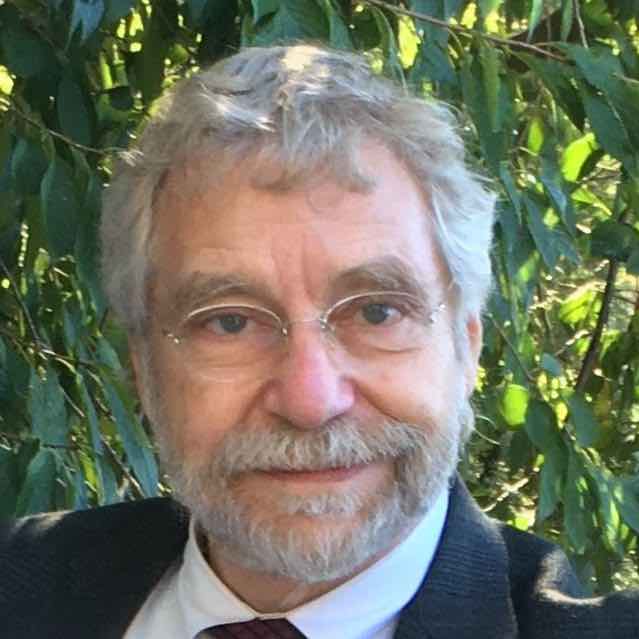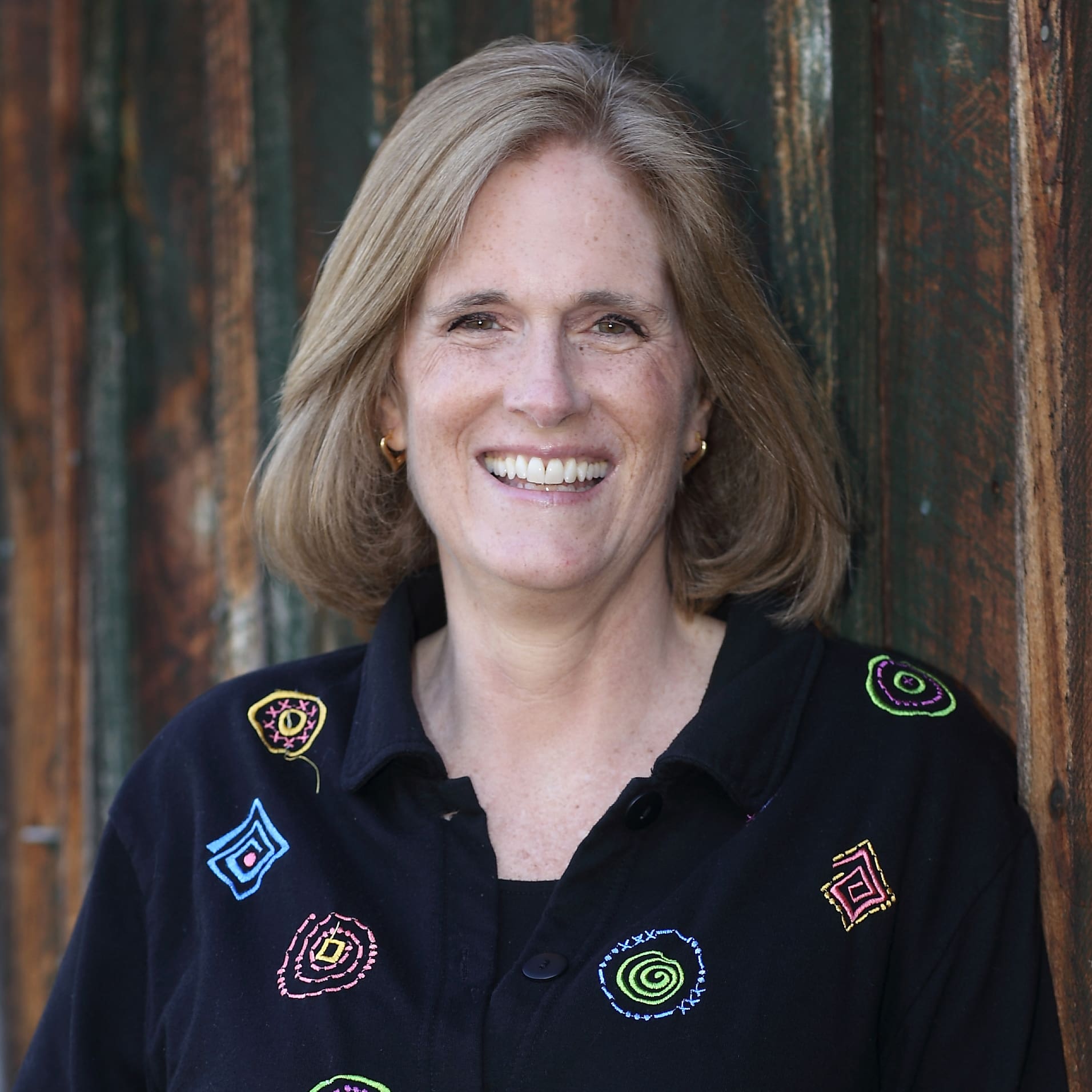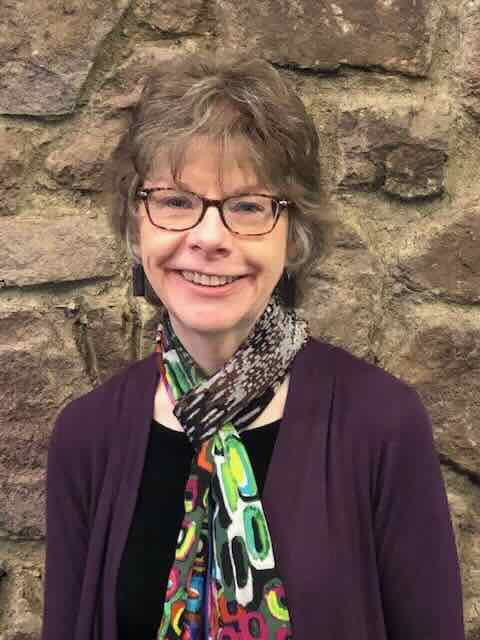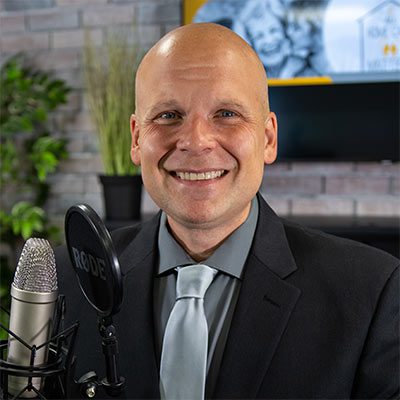Paradigms, Stereotypes and Mental Models
First independent project interviews
n
u201cI told u2019im u2018You know, Bob, youu2019re not the only one with an engineering degree!u2019 u2018Nu2019 thenu00a0 he said, u2018Oh, thatu2019s right, Paulee, I forgot, you got a diploma from Steveu2019s college in New Jersey!u2019 Everybody laughed ou2019course, but I never forgot that. I mean, Stevens Tech is a very well respected MechE, better than CMU on some lists. All right I donu2019t have a masters like him, but my parents donu2019t live in Fox Chapelle, neither. So this goes back a long ways.u201d
n
It was my first interview as an independent consultant and my first client not on subcontract to my former employer,. It was the summer of 1987 and I was questioning my decision to work for myself.
n
I met with the division head. u201cI need you to fix this!u201d was how he opened our meeting. He went on to describe a u201cconflict between sales and engineering thatu2019s gotten way out of hand.u201d
n
He continued. u201cLook sales and engineering always have problems. Theyu2019re different animals. And there is a long tradition in this company of pranks. You know somebody steals all the toilet paper from the ladies room and everyone laughs, but last week someone lit two waste baskets in engineering ON FIRE! I mean the whole place is rolled up drawings. Nobodyu2019s owned up, just like nobody owned up to letting the air out of two tires on Pauleeu2019s Eldorado. The kid was steamed, says he missed a meeting and lost a sale, but he swears he isnu2019t the firebug. u00a0He was out on a call. Iu2019m told youu2019re good and your fees are reasonable u2018cause youu2019re just starting out . Corporate canu2019t hear about this, OK?u201d
n
Conflict resolution, u201cI got this,u201d I thought.. I planned to do some interviews and feed them back in a workshop, but as I got into it I knew Iu2019d need to do more..
n
u201cMy name is Paul.u201d My first interview said as I met him Iin the break room. u201cSome people around here call me Paulee, what theyu2019d call me when Iu2019d visit my Dad in the mill as a kid. Iu2019ve been Paul since college, still tryinu2019 to change that here. Long memories I guess.u201d
n
I interviewed Bob, the division engineering head.u00a0 Paul was late twenties about seven years younger than me; Bob mid-forties, about ten years older than me.
n
u201cPauleeu2019s a good kid, bit of a hothead, easy to wind up, if you know what I mean. Heu2019s come a long way for a kid from the Rocks. Did he show you his Eldorado yet?u201d In fact, Paul had walked me around his dark blue Cadillac ragtop with the heavy chrome grill and the custom Steelers hood ornament.
n
u201cPauleeu2019s fatheru2019s been out of work for a while now. Steel is in that familyu2019s blood. I think the grandfather was in the McKees Rocks Strike. Paulleeu2019s the first one to go to college and heu2019s a smart one, even if he does tell you so himself. He just doesnu2019t have the understanding of how we do things. We make pipe and some of that pipe carries dangerous stuff. . .u201d
n
u201cExcuse me? Pipe?u201d This division made racks and railcar loaders.
n
u201cYeah,u201d he chuckled. u201c I talk like Iu2019m still in Central Engineering. Old habits die hard.u201d
n
The conflict wasnu2019t just Paul and Bob, but Paulu2019s success was a flash point for the engineers. u201cHeu2019s been selling to a mini-mill out east and those service centers dumping foreign steel. They want to own the equipment, not lease, which is nice big commissions for Paulee, but no on-going lease payments and service agreements. Heu2019s selling the seed corn and destroying the industry in the bargain.u201d
n
This was Pittsburgh in the 1980s. Big Steel was dying, but a lot of people hadnu2019t accepted it yet. Carnegieu2019s first mill, Duquesne Works closed in 1984 along with the Clairton Works. In 1986 Homestead closed; it had been shut down since 1983, but people still were shocked. u201cWhat are we going to do if thereu2019s another war and we need armor for battleships?u201d Many people including most of the engineer team said things like, u201cWeu2019ve been through recessions before. Itu2019ll come back.u201d
n
Even I didnu2019t see that the steel industry in Pittsburgh had died. Yes, I had been fired from my job in 1984 because I could no longer sell training to the steel industry or Pittsburgh banks, but I internalized that as a personal failure. I had u201csingle handedly turned a million dollar territory to $250 thousand in one year.u201d
n
When I interviewed the salesmen, I saw a different point of view. The salesmen did what salespeople do; if existing customers arenu2019t buying; they find new customers. (I myself did this -the $250K was new business from banks in Ohio). These salesmen sold to new mini-mills which made steel from scrap. They sold to service centers, which imported cheap steel from Japan and Korea. They sold to aluminum manufacturers. These customers wanted different things, modifications to racks and loading equipment.
n
Engineering wanted to follow existing protocols. u201cThese sales guys will promise anything a customer asks regardless of risk or profit.u201d
n
u201cIf engineers would pull their heads out of the sand theyu2019d see that these folks are loading trucks not railcars. Of course, the specs have to change.u201d
n
It didnu2019t help that the sales commission structure was based on the old lease and maintenance contracts. These numbers were a lot larger and some salespeople were earning twice what engineers were earning.
n
The two groups were yelling a lot, but not really talking. There was also a lot of name-calling: u201cHucksters and gladhanders!u201d: u201cAnal-retentive stick-in-the-muds!u201d (And yes, Iu2019ve cleaned this up some.)
n
Workshop hole
n
After the interviews, I told my client that we needed a day and a half off-site and not the half day in a conference room heu2019d suggested and he agreed. With everyone grumbling, we all went to a Holiday Inn with a one night required stay. My client kicked off the session with a harangue that included u201cfix this or heads will roll!u201d Not exactly what Iu2019d hoped for but I started the feedback as soon as he left.
n
You may have gathered that I was a relatively young consultant. I had also been recently educated in Organization Development and was reading as much as I could. My presentation style was laced with the latest OD jargon.
n
I fed back what I discovered using unattributed, but unedited, direct quotes, which shocked the fourteen men, (yes, they were all men). However, I interspersed the findings with my new vocabulary. I talked about the changing paradigms of sales in a post-Big Steel world. I talked about the need to avoid stereotyping the other function (yes, I really made a verb from a noun). I talked about building a new u201cmental modelu201d that avoided u201cconfirmation bias.u201d
n
The pandemonium started slowly. u00a0At a break, Bob handed me two dimes. u201cYou keep talking about paradigms, I figured you were a little short,u201d u00a0He said loudly. The laughter was deafening.
n
u201cAlan, Alan, stereotyping? u00a0Does that mean two typewriters or are you gonna play music for the girls?u201d More hilarity. Then several of the men began doing a u201cfashion walku201d with crossed eyes and tongues hanging out. u201cLook at me. Iu2019m a mental model.u201d More belly laughs. A fifteen minute break turned into thirty minutes of raucous hysteria.
n
Later in my consulting career, when I taught group facilitation, I shared a rule, u201cWhen youu2019re in a hole, stop digging.u201d I didnu2019t know that then. I felt the need to re-explain to the group that a paradigm was a typical pattern of behavior based upon historical example. It might follow a particular u201cmental modelu201d or way of thinking about the business like the lease and maintenance contracts model. I described that while we often think of stereotypes in the context of race or class, they could also be based upon peopleu2019s jobs.
n
The group became more united, totally united in making fun of me. I remembered sharing my new business mission u201cI will change the world of work,u201d with a senior vice president in a bank. This sixty -year-old woman smiled at me and said,
n
u201cWell, arenu2019t you just precious!u201d
n
Climbing out
n
I stopped digging and moved on to the second half of the workshop, Richard Beckhardu2019s intergroup conflict Exercise, u201cThe Two-Way Mirror.u201d
n
Because I was in a hole, I explained very little of the history of the exercise where Beckhard resolved a long standing conflict between marketing and operations at Mobil. I just explained what they were do:
n
- n
- Break into functional groups – Engineering and Sales
- Prepare two flip chartsn
- n
- Us: How we view ourselves: Strengths, Weaknesses, Characteristics, Typical Behaviors.
- How we think you view us? Strengths, Weaknesses, Characteristics, Typical Behaviors.
n
n
n
- Return to present to the large group.
n
n
n
n
A buffet lunch was served and each group worked over lunch. When they returned, something of a miracle happened.
n
The groups flipped a coin to see who would present Us charts. There was still a lot of joking around, although less was directed at me. I still took some shots from each group, u201cOur u2018paradigmu2019. . .u201d or u201cWe have u00a0a u2018mental modelu2019 that. . .u201d but they also laughed at themselves. I was struck by how earnest each group was talking about both what they did well, the value they contributed and what their weaknesses were.
n
We took a break before u201cwhat do you think of usu201d and sales and engineering made some gently supportive comments to each other at the soft drinks and snacks table, but they u00a0were each nervous about the presentations to come.
n
They tossed a coin again. Sales had presented first before, engineering went first this time.
n
u201dI know you guys think we are real buttholes.u201d
n
u201cHey – No, man. ..u201d salesmen commented. I asked the group to hold their comments till each had presented. They did, with some difficulty.
n
Each group presented only the negative stereotypes they felt the other harbored about them. At the end I had each group comment. Each group staunchly maintained they didnu2019t think that negatively about the other. u201cNo Way, man!, sure there are some things we wish youu2019d do, but you are definitely not whale poop at the bottom of the ocean.u201d
n
The next day they worked in mixed groups to plan u201crules of the roadu201d for future interaction and collaborative projects, which they presented to the division head before lunch. My client was impressed.
n
Later, many in the group said the improvement came from drinking together in the bar. Iu2019m sure that helped and besides, my mental model of success doesnu2019t include receiving credit.
“,”tablet”:”
First independent project interviews
n
u201cI told u2019im u2018You know, Bob, youu2019re not the only one with an engineering degree!u2019 u2018Nu2019 then he said, u2018Oh, thatu2019s right, Paulee, I forgot, you got a diploma from Steveu2019s college in New Jersey!u2019 Everybody laughed ou2019course, but I never forgot that. I mean, Stevens Tech is a very well respected MechE, better than CMU on some lists. All right I donu2019t have a masters like him, but my parents donu2019t live in Fox Chapelle, neither. So this goes back a long ways.u201d
n
It was my first interview as an independent consultant and my first client not on subcontract to my former employer,. It was the summer of 1987 and I was questioning my decision to work for myself.
n
I met with the division head. u201cI need you to fix this!u201d was how he opened our meeting. He went on to describe a u201cconflict between sales and engineering thatu2019s gotten way out of hand.u201d
n
He continued. u201cLook sales and engineering always have problems. Theyu2019re different animals. And there is a long tradition in this company of pranks. You know somebody steals all the toilet paper from the ladies room and everyone laughs, but last week someone lit two waste baskets in engineering ON FIRE! I mean the whole place is rolled up drawings. Nobodyu2019s owned up, just like nobody owned up to letting the air out of two tires on Pauleeu2019s Eldorado. The kid was steamed, says he missed a meeting and lost a sale, but he swears he isnu2019t the firebug. He was out on a call. Iu2019m told youu2019re good and your fees are reasonable u2018cause youu2019re just starting out . Corporate canu2019t hear about this, OK?u201d
n
Conflict resolution, u201cI got this,u201d I thought.. I planned to do some interviews and feed them back in a workshop, but as I got into it I knew Iu2019d need to do more..
n
u201cMy name is Paul.u201d My first interview said as I met him Iin the break room. u201cSome people around here call me Paulee, what theyu2019d call me when Iu2019d visit my Dad in the mill as a kid. Iu2019ve been Paul since college, still tryinu2019 to change that here. Long memories I guess.u201d
n
I interviewed Bob, the division engineering head. Paul was late twenties about seven years younger than me; Bob mid-forties, about ten years older than me.
n
u201cPauleeu2019s a good kid, bit of a hothead, easy to wind up, if you know what I mean. Heu2019s come a long way for a kid from the Rocks. Did he show you his Eldorado yet?u201d In fact, Paul had walked me around his dark blue Cadillac ragtop with the heavy chrome grill and the custom Steelers hood ornament.
n
u201cPauleeu2019s fatheru2019s been out of work for a while now. Steel is in that familyu2019s blood. I think the grandfather was in the McKees Rocks Strike. Paulleeu2019s the first one to go to college and heu2019s a smart one, even if he does tell you so himself. He just doesnu2019t have the understanding of how we do things. We make pipe and some of that pipe carries dangerous stuff. . .u201d
n
u201cExcuse me? Pipe?u201d This division made racks and railcar loaders.
n
u201cYeah,u201d he chuckled. u201c I talk like Iu2019m still in Central Engineering. Old habits die hard.u201d
n
The conflict wasnu2019t just Paul and Bob, but Paulu2019s success was a flash point for the engineers. u201cHeu2019s been selling to a mini-mill out east and those service centers dumping foreign steel. They want to own the equipment, not lease, which is nice big commissions for Paulee, but no on-going lease payments and service agreements. Heu2019s selling the seed corn and destroying the industry in the bargain.u201d
n
This was Pittsburgh in the 1980s. Big Steel was dying, but a lot of people hadnu2019t accepted it yet. Carnegieu2019s first mill, Duquesne Works closed in 1984 along with the Clairton Works. In 1986 Homestead closed; it had been shut down since 1983, but people still were shocked. u201cWhat are we going to do if thereu2019s another war and we need armor for battleships?u201d Many people including most of the engineer team said things like, u201cWeu2019ve been through recessions before. Itu2019ll come back.u201d
n
Even I didnu2019t see that the steel industry in Pittsburgh had died. Yes, I had been fired from my job in 1984 because I could no longer sell training to the steel industry or Pittsburgh banks, but I internalized that as a personal failure. I had u201csingle handedly turned a million dollar territory to $250 thousand in one year.u201d
n
When I interviewed the salesmen, I saw a different point of view. The salesmen did what salespeople do; if existing customers arenu2019t buying; they find new customers. (I myself did this -the $250K was new business from banks in Ohio). These salesmen sold to new mini-mills which made steel from scrap. They sold to service centers, which imported cheap steel from Japan and Korea. They sold to aluminum manufacturers. These customers wanted different things, modifications to racks and loading equipment.
n
Engineering wanted to follow existing protocols. u201cThese sales guys will promise anything a customer asks regardless of risk or profit.u201d
n
u201cIf engineers would pull their heads out of the sand theyu2019d see that these folks are loading trucks not railcars. Of course, the specs have to change.u201d
n
It didnu2019t help that the sales commission structure was based on the old lease and maintenance contracts. These numbers were a lot larger and some salespeople were earning twice what engineers were earning.
n
The two groups were yelling a lot, but not really talking. There was also a lot of name-calling: u201cHucksters and gladhanders!u201d: u201cAnal-retentive stick-in-the-muds!u201d (And yes, Iu2019ve cleaned this up some.)
n
Workshop hole
n
After the interviews, I told my client that we needed a day and a half off-site and not the half day in a conference room heu2019d suggested and he agreed. With everyone grumbling, we all went to a Holiday Inn with a one night required stay. My client kicked off the session with a harangue that included u201cfix this or heads will roll!u201d Not exactly what Iu2019d hoped for but I started the feedback as soon as he left.
n
You may have gathered that I was a relatively young consultant. I had also been recently educated in Organization Development and was reading as much as I could. My presentation style was laced with the latest OD jargon.
n
I fed back what I discovered using unattributed, but unedited, direct quotes, which shocked the fourteen men, (yes, they were all men). However, I interspersed the findings with my new vocabulary. I talked about the changing paradigms of sales in a post-Big Steel world. I talked about the need to avoid stereotyping the other function (yes, I really made a verb from a noun). I talked about building a new u201cmental modelu201d that avoided u201cconfirmation bias.u201d
n
The pandemonium started slowly. At a break, Bob handed me two dimes. u201cYou keep talking about paradigms, I figured you were a little short,u201d He said loudly. The laughter was deafening.
n
u201cAlan, Alan, stereotyping? Does that mean two typewriters or are you gonna play music for the girls?u201d More hilarity. Then several of the men began doing a u201cfashion walku201d with crossed eyes and tongues hanging out. u201cLook at me. Iu2019m a mental model.u201d More belly laughs. A fifteen minute break turned into thirty minutes of raucous hysteria.
n
Later in my consulting career, when I taught group facilitation, I shared a rule, u201cWhen youu2019re in a hole, stop digging.u201d I didnu2019t know that then. I felt the need to re-explain to the group that a paradigm was a typical pattern of behavior based upon historical example. It might follow a particular u201cmental modelu201d or way of thinking about the business like the lease and maintenance contracts model. I described that while we often think of stereotypes in the context of race or class, they could also be based upon peopleu2019s jobs.
n
The group became more united, totally united in making fun of me. I remembered sharing my new business mission u201cI will change the world of work,u201d with a senior vice president in a bank. This sixty -year-old woman smiled at me and said,
n
u201cWell, arenu2019t you just precious!u201d
n
Climbing out
n
I stopped digging and moved on to the second half of the workshop, Richard Beckhardu2019s intergroup conflict exercise, u201cThe Two-Way Mirror.u201d
n
Because I was in a hole, I explained very little of the history of the exercise where Beckhard resolved a long standing conflict between marketing and operations at Mobil. I just explained what they were do:
n
- n
- Break into functional groups – Engineering and Sales
- Prepare two flip chartsn
- n
- Us: How we view ourselves: Strengths, Weaknesses, Characteristics, Typical Behaviors.
- How we think you view us? Strengths, Weaknesses, Characteristics, Typical Behaviors.
n
n
n
- Return to present to the large group.
n
n
n
n
A buffet lunch was served and each group worked over lunch. When they returned, something of a miracle happened.
n
The groups flipped a coin to see who would present Us charts. There was still a lot of joking around, although less was directed at me. I still took some shots from each group, u201cOur u2018paradigmu2019. . .u201d or u201cWe have a u2018mental modelu2019 that. . .u201d but they also laughed at themselves. I was struck by how earnest each group was talking about both what they did well, the value they contributed and what their weaknesses were.
n
We took a break before u201cwhat do you think of usu201d and sales and engineering made some gently supportive comments to each other at the soft drinks and snacks table, but they were each nervous about the presentations to come.
n
They tossed a coin again. Sales had presented first before, engineering went first this time.
n
u201dI know you guys think we are real buttholes.u201d
n
u201cHey – No, man. ..u201d salesmen commented. I asked the group to hold their comments till each had presented. They did, with some difficulty.
n
Each group presented only the negative stereotypes they felt the other harbored about them. At the end I had each group comment. Each group staunchly maintained they didnu2019t think that negatively about the other. u201cNo Way, man!, sure there are some things we wish youu2019d do, but you are definitely not whale poop at the bottom of the ocean.u201d
n
The next day they worked in mixed groups to plan u201crules of the roadu201d for future interaction and collaborative projects, which they presented to the division head before lunch. My client was impressed.
n
Later, many in the group said the improvement came from drinking together in the bar. Iu2019m sure that helped and besides, my mental model of success doesnu2019t include receiving credit.
“}},”slug”:”et_pb_text”}” data-et-multi-view-load-tablet-hidden=”true”>
First independent project interviews
“I told ’im ‘You know, Bob, you’re not the only one with an engineering degree!’ ‘N’ then he said, ‘Oh, that’s right, Paulee, I forgot, you got a diploma from Steve’s college in New Jersey!’ Everybody laughed o’course, but I never forgot that. I mean, Stevens Tech is a very well respected MechE, better than CMU on some lists. All right I don’t have a masters like him, but my parents don’t live in Fox Chapelle, neither. So this goes back a long ways.”
It was my first interview as an independent consultant and my first client not on subcontract to my former employer,. It was the summer of 1987 and I was questioning my decision to work for myself.
I met with the division head. “I need you to fix this!” was how he opened our meeting. He went on to describe a “conflict between sales and engineering that’s gotten way out of hand.”
He continued. “Look sales and engineering always have problems. They’re different animals. And there is a long tradition in this company of pranks. You know somebody steals all the toilet paper from the ladies room and everyone laughs, but last week someone lit two waste baskets in engineering ON FIRE! I mean the whole place is rolled up drawings. Nobody’s owned up, just like nobody owned up to letting the air out of two tires on Paulee’s Eldorado. The kid was steamed, says he missed a meeting and lost a sale, but he swears he isn’t the firebug. He was out on a call. I’m told you’re good and your fees are reasonable ‘cause you’re just starting out . Corporate can’t hear about this, OK?”
Conflict resolution, “I got this,” I thought.. I planned to do some interviews and feed them back in a workshop, but as I got into it I knew I’d need to do more..
“My name is Paul.” My first interview said as I met him Iin the break room. “Some people around here call me Paulee, what they’d call me when I’d visit my Dad in the mill as a kid. I’ve been Paul since college, still tryin’ to change that here. Long memories I guess.”
I interviewed Bob, the division engineering head. Paul was late twenties about seven years younger than me; Bob mid-forties, about ten years older than me.
“Paulee’s a good kid, bit of a hothead, easy to wind up, if you know what I mean. He’s come a long way for a kid from the Rocks. Did he show you his Eldorado yet?” In fact, Paul had walked me around his dark blue Cadillac ragtop with the heavy chrome grill and the custom Steelers hood ornament.
“Paulee’s father’s been out of work for a while now. Steel is in that family’s blood. I think the grandfather was in the McKees Rocks Strike. Paullee’s the first one to go to college and he’s a smart one, even if he does tell you so himself. He just doesn’t have the understanding of how we do things. We make pipe and some of that pipe carries dangerous stuff. . .”
“Excuse me? Pipe?” This division made racks and railcar loaders.
“Yeah,” he chuckled. “ I talk like I’m still in Central Engineering. Old habits die hard.”
The conflict wasn’t just Paul and Bob, but Paul’s success was a flash point for the engineers. “He’s been selling to a mini-mill out east and those service centers dumping foreign steel. They want to own the equipment, not lease, which is nice big commissions for Paulee, but no on-going lease payments and service agreements. He’s selling the seed corn and destroying the industry in the bargain.”
This was Pittsburgh in the 1980s. Big Steel was dying, but a lot of people hadn’t accepted it yet. Carnegie’s first mill, Duquesne Works closed in 1984 along with the Clairton Works. In 1986 Homestead closed; it had been shut down since 1983, but people still were shocked. “What are we going to do if there’s another war and we need armor for battleships?” Many people including most of the engineer team said things like, “We’ve been through recessions before. It’ll come back.”
Even I didn’t see that the steel industry in Pittsburgh had died. Yes, I had been fired from my job in 1984 because I could no longer sell training to the steel industry or Pittsburgh banks, but I internalized that as a personal failure. I had “single handedly turned a million dollar territory to $250 thousand in one year.”
When I interviewed the salesmen, I saw a different point of view. The salesmen did what salespeople do; if existing customers aren’t buying; they find new customers. (I myself did this -the $250K was new business from banks in Ohio). These salesmen sold to new mini-mills which made steel from scrap. They sold to service centers, which imported cheap steel from Japan and Korea. They sold to aluminum manufacturers. These customers wanted different things, modifications to racks and loading equipment.
Engineering wanted to follow existing protocols. “These sales guys will promise anything a customer asks regardless of risk or profit.”
“If engineers would pull their heads out of the sand they’d see that these folks are loading trucks not railcars. Of course, the specs have to change.”
It didn’t help that the sales commission structure was based on the old lease and maintenance contracts. These numbers were a lot larger and some salespeople were earning twice what engineers were earning.
The two groups were yelling a lot, but not really talking. There was also a lot of name-calling: “Hucksters and gladhanders!”: “Anal-retentive stick-in-the-muds!” (And yes, I’ve cleaned this up some.)
Workshop hole
After the interviews, I told my client that we needed a day and a half off-site and not the half day in a conference room he’d suggested and he agreed. With everyone grumbling, we all went to a Holiday Inn with a one night required stay. My client kicked off the session with a harangue that included “fix this or heads will roll!” Not exactly what I’d hoped for but I started the feedback as soon as he left.
You may have gathered that I was a relatively young consultant. I had also been recently educated in Organization Development and was reading as much as I could. My presentation style was laced with the latest OD jargon.
I fed back what I discovered using unattributed, but unedited, direct quotes, which shocked the fourteen men, (yes, they were all men). However, I interspersed the findings with my new vocabulary. I talked about the changing paradigms of sales in a post-Big Steel world. I talked about the need to avoid stereotyping the other function (yes, I really made a verb from a noun). I talked about building a new “mental model” that avoided “confirmation bias.”
The pandemonium started slowly. At a break, Bob handed me two dimes. “You keep talking about paradigms, I figured you were a little short,” He said loudly. The laughter was deafening.
“Alan, Alan, stereotyping? Does that mean two typewriters or are you gonna play music for the girls?” More hilarity. Then several of the men began doing a “fashion walk” with crossed eyes and tongues hanging out. “Look at me. I’m a mental model.” More belly laughs. A fifteen minute break turned into thirty minutes of raucous hysteria.
Later in my consulting career, when I taught group facilitation, I shared a rule, “When you’re in a hole, stop digging.” I didn’t know that then. I felt the need to re-explain to the group that a paradigm was a typical pattern of behavior based upon historical example. It might follow a particular “mental model” or way of thinking about the business like the lease and maintenance contracts model. I described that while we often think of stereotypes in the context of race or class, they could also be based upon people’s jobs.
The group became more united, totally united in making fun of me. I remembered sharing my new business mission “I will change the world of work,” with a senior vice president in a bank. This sixty -year-old woman smiled at me and said,
“Well, aren’t you just precious!”
Climbing out
I stopped digging and moved on to the second half of the workshop, Richard Beckhard’s intergroup conflict exercise, “The Two-Way Mirror.”
Because I was in a hole, I explained very little of the history of the exercise where Beckhard resolved a long standing conflict between marketing and operations at Mobil. I just explained what they were do:
- Break into functional groups – Engineering and Sales
- Prepare two flip charts
- Us: How we view ourselves: Strengths, Weaknesses, Characteristics, Typical Behaviors.
- How we think you view us? Strengths, Weaknesses, Characteristics, Typical Behaviors.
- Return to present to the large group.
A buffet lunch was served and each group worked over lunch. When they returned, something of a miracle happened.
The groups flipped a coin to see who would present Us charts. There was still a lot of joking around, although less was directed at me. I still took some shots from each group, “Our ‘paradigm’. . .” or “We have a ‘mental model’ that. . .” but they also laughed at themselves. I was struck by how earnest each group was talking about both what they did well, the value they contributed and what their weaknesses were.
We took a break before “what do you think of us” and sales and engineering made some gently supportive comments to each other at the soft drinks and snacks table, but they were each nervous about the presentations to come.
They tossed a coin again. Sales had presented first before, engineering went first this time.
”I know you guys think we are real buttholes.”
“Hey – No, man. ..” salesmen commented. I asked the group to hold their comments till each had presented. They did, with some difficulty.
Each group presented only the negative stereotypes they felt the other harbored about them. At the end I had each group comment. Each group staunchly maintained they didn’t think that negatively about the other. “No Way, man!, sure there are some things we wish you’d do, but you are definitely not whale poop at the bottom of the ocean.”
The next day they worked in mixed groups to plan “rules of the road” for future interaction and collaborative projects, which they presented to the division head before lunch. My client was impressed.
Later, many in the group said the improvement came from drinking together in the bar. I’m sure that helped and besides, my mental model of success doesn’t include receiving credit.
The post Paradigms, Stereotypes and Mental Models appeared first on Wisdom from Unusual Places.
Originally Published on https://wisdomfromunusualplaces.com/blog/

























